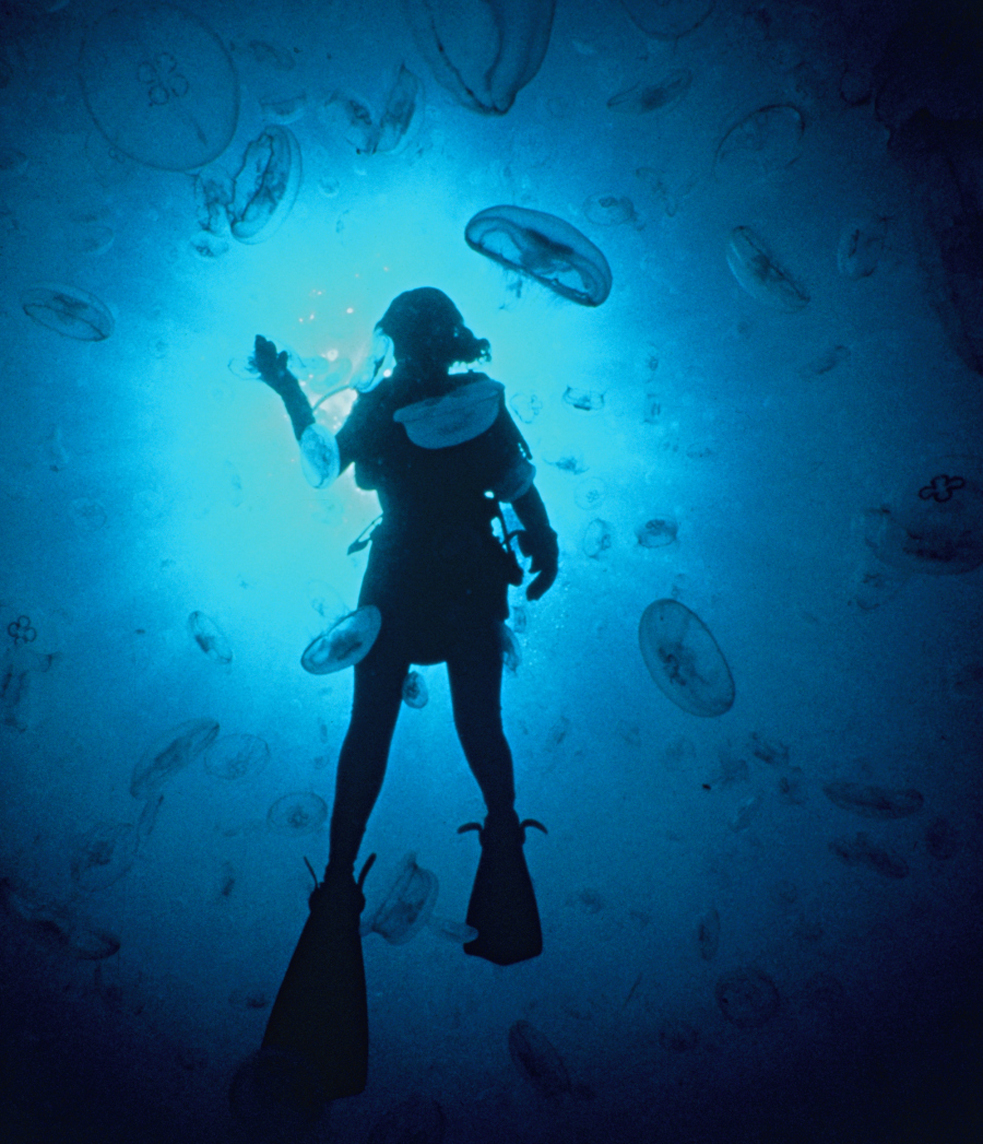
How colorful is the ocean floor? And what exactly do you do when you run out of air underwater? Yesterday, we invited all of you to talk with oceanographer Sylvia Earle about her adventures as a deep sea diver. Earle is a TED Prize winner and the subject of a new documentary, Mission Blue, which gives an inside look at her lifelong mission to save our oceans.
Below, we collected some of the best moments from this Facebook Q&A. (You can read the full Q&A here.)
Q: What is a thought or feeling you have only when diving?
A: One of the special things about diving is that you are suspended by the water, so you can do extraordinary things you can’t do on land. You can essentially fly. There’s nothing quite like that!
Q: What has been your most memorable interaction with a whale?
A: My first glimpse of whales on their own terms was on February 14, 1977, offshore from Maui. Five whales came directly for the little boat I was in with three other people. We looked over the side and they were looking up at us. No one at that time had been diving with whales. It was so exciting to have these giants come rushing towards me, looking at me with those great eyes and then circling around and coming back for another look. They seemed as curious about us as we were about them. It gave new meaning to the term “whale watching.”
Q: How crisp are the colors on the ocean floor? Is it really like in the movies?
A: In the deep sea, it’s dark! Below 1000 feet, it’s dark all the time, except for the light that many of the animals and bacteria actually generate: bioluminescence, the kind of light that fireflies and glowworms make.
Q: What kind of technology (other than the obvious SCUBA suits and such) do you use to help you explore?
A: I’ve had the pleasure of using more than 30 different kinds of submarines—little subs. Some of them are simple enough to drive that even I as a scientist can be the pilot.
Q: How do you feel about what is going on with Sea World?
A: I think the only marine mammals that should be in captivity now in the 21st century are those animals that have been rescued, rehabilitated and cannot go back to the wild. Or those that have been born in captivity and couldn’t readily survive in the wild. There is no reason anymore to take marine mammals from the wild. We didn’t know 50 years ago what the consequences were, but now we know how devastating this is to the social structure of these animals.
Q: What do you do when you run out of air?
A: I’ve had some close encounters with running out of air. I was actually living underwater, so I couldn’t go back to the surface directly. But I was diving with a buddy and we shared air to get back to home base.
Q: What is the scariest experience you’ve had during a dive?
A: The scariest experience with my diving comes on the highway getting to the ocean. That’s always the case … that’s really scary!
Q: On behalf of my kids who would love to ask you, what ocean animal do you find most fascinating, and why?
A: My answer might surprise you: humans. Like all creatures who actually live in the ocean, we too are sea creatures. We need the ocean as much as the dolphins, whales, coral reefs and sea stars do. No ocean, no us. The ocean touches us with every breath we take, every drop we drink. And now the ocean really needs us to take care of the problems that are affecting its health.
Comments (12)